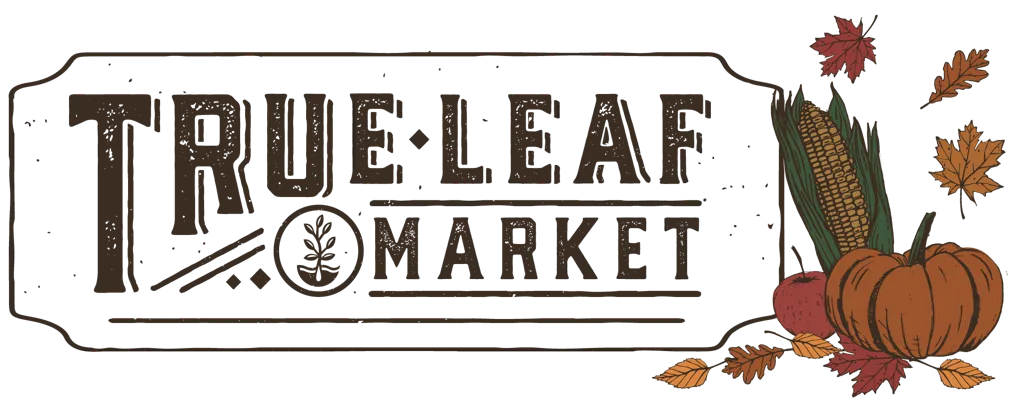Download Free Vegetable Growing Guide PDF
Other Common Names: Asparagus beans, Chinese Long beans, banor, cai dou, chang dou, chang jiang dou, chang kong tau, cheung kong tau, dau dua, dau gok, dau que, diya mekaral, dow gauk, garter bean, hamtak, jiang dou, juroku sasage mame, kacang belut, kacang panjang, kacang panjang hijau, kacang perut ayam, lobia, otok, sasage, sitao, sitaw, snake bean, tau afuk yaou, tau fug yao, thua chin, or tseng dou.
Growing White Seeded Yard Long Beans in the Vegetable Garden
Pre-germinate the seeds on a moist paper towel for a head start. Yard Long Bean seeds are directly sown in soil at least 60 F, where there is a minimal risk of frost. Grow in a warm, sunny spot. The biggest culprit for low germination or seedling failure is cool temperatures. Only plant if the soil temperature is warm enough. Train the vines to climb strings or supports as they grow. Yard Long Beans are low maintenance.
Avoid high-nitrogen fertilizers, which may lead to excessive foliage growth at the expense of bean production. The White Seeded bean grows well alongside radishes, cucumbers, and corn, but avoid planting near onions or garlic, as alliums can inhibit bean growth.
Harvesting White Seeded Yard Long Beans
White-seeded yard-long beans can be anywhere from 18-30 inches long when ready to be harvested. They should be glossy and firm, but before the seeds have started to bulge. Cut the beans off the plant, being careful not to damage the vine. Regular harvesting will improve yields.
About White Seeded Yard Long Bean Garden Seeds
White Seeded Yard Long Beans are nutritious, providing fiber, protein, vitamins A and C, and essential minerals, making them beneficial for digestion, immunity, and heart health.
Their mild flavor and tender texture make them versatile for cooking; they are frequently used in stir-fries, steamed dishes, and soups.
White Seeded Yard Long Beans were bred for high yields and adaptability to warm, humid climates. Their resilience against high temperatures and varying soil conditions has made them a staple in tropical and subtropical regions.
Culinary Tips
Pods, seeds, stems, and leaves are all edible! This type of bean is used in the popular Szechwan dish Dry Fried Beans. Try them in recipes in place of snap beans. Prepare the bean pods by cutting them into 2" sections.
Tips From Our Gardeners
“If you feel your yard is too hot to grow anything, you should give yard long beans a try! The plants are heat tolerant and the pods are a striking spectacle.”
 |
- Lara Wadsworth, True Leaf Market Writer |
Other Resources
Seeds Per Package
- 6 g packet - Approximately 44 Seeds
- 4 oz - Approximately 840 Seeds
- 1 lb - Approximately 3,360 Seeds
- 5 lb - Approximately 16,800 Seeds
ATTRIBUTES
Basic Info
| Latin Name: |
Vigna unguiculata subsp. sesquipedalis
|
| Bean Sub-Type: |
Asian - Asian beans encompass a wide spectrum of bean varieties, either originating from Asia or being especially popular in Asian cultures. Specialty - There are many subcategories of beans, and in the interest of simplifying what would be an overwhelming number of bean varieties, we group them as 'specialty'. These include but are not limited to yardlong beans, winged beans, hyacinth beans, sword beans, asparagus beans, adzuki, mung, garbanzo, and others. |
| White Seeded Yard Long Bean Color: |
Green |
| White Seeded Yard Long Bean Flavor: |
The pods have a mild flavor with a subtly earthy taste and tender-crisp texture. |
Growing Info
| Hardiness Zone: |
3, 4, 5, 6, 7, 8, 9, 10, 11, 12 Annual Crop: Not Intended to Overwinter |
| Days to Maturity: |
65-75 |
| Days to Germination: |
5-10 |
| Seeding Depth: |
1 inch |
| Plant Spacing: |
4-6 inches |
| Row Spacing: |
24 inches |
| Plant Height: |
60-108 inches |
| Growth Habit: |
Vining |
| Soil Preference: |
Beans prefer well-draining, nutrient-rich, loamy soil with a pH of 6.0-6.8. As light feeders and nitrogen-fixing legumes, beans do not require nitrogen-heavy fertilizers. |
| Temperature Preference: |
Warmer (70-85 F). |
| Light Preference: |
Full Sun |
Other
| Direct Sow: |
Yes, direct sow when soil temperatures are reliably above 60 F. Planting with an inoculant may increase yields, but is certainly not required for a successful grow. |
| Start Indoors: |
Not Recommended. Beans grow best without any root disturbance. We recommend direct sowing instead of transplanting. |
| Bean Pollination: |
Beans are self-pollinating as they contain both the male and female parts within their flowers, unlike other fruit and vegetable plants. While they are self-pollinating, having a variety of pollinators and flowers around will improve yields by ensuring the greatest chances for pollinating events to occur. |
| Snap or Shell Bean: |
Snap - Snap beans have a fleshy edible pod. Snap beans are also commonly referred to as string beans or green beans (though not all snap beans are green). They are called snap beans because they make a snapping sound when you break them in half. |
| Pole or Bush Bean: |
Pole - Pole beans are vining-type plants that put out runners that grow very long or tall. Pole beans are so-called because they require a trellis, support, or wait for it… a pole. Pole beans require more effort than bush beans but may also be grown in containers with the right support. |
| Plant Width: |
12-18 inches |
| Growth Speed: |
Mid - Ready for harvest around 66-86 days. |
| Deer Resistant: |
No |
| Germination Temperature: |
70-90 F |
| Pests and Diseases: |
Beans are susceptible to beetles, aphids, spider mites, and cutworms. Look for signs of chewing, curling leaves, eggs on the undersides of leaves, and leaf discoloration. Keeping your bean plants clean from dust build-up and surrounded by a variety of plants to help deter and prevent pest damage. Beans are also susceptible to powdery mildew, bean blight, rust, and root rot. Maintain a regular watering schedule that avoids overly saturated soil. The roots need adequate time to air out between watering. This will also help prevent common fungal and bacterial diseases from developing. Good air circulation and applying water to the ground rather than the leaves will help maintain healthy bean plant growth. |
| Garden Size: |
Greenhouse, Garden Plot, Raised Bed, Container |
| Bean Use: |
Stir-fries, steamed dishes, and soups. |
| Climate Tolerance: |
Heat Tolerant |



















